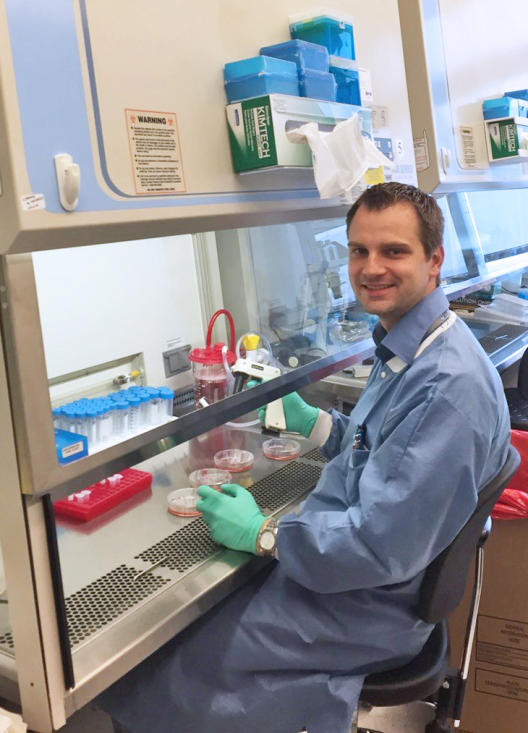From Münster to Houston

Sometimes an internship abroad can serve as a springboard for an international career – or it turns into a full-time job. That is what happened in the case of Dr. Tim Sauer. In the summer of 2015 he was still working as a senior physician in the field of bone marrow transplants at Münster University Hospital (UKM). Through the “Train-Gain” programme at the “Cells in Motion” (CiM) Cluster of Excellence at Münster University he funded an internship at Baylor College of Medicine in Houston. He soon decided to live and do research in the USA for a longer period of time. He has now settled down in the American city, and in this interview with Frank Schlegel he explains how it all came about and what he does in his new job.
Your internship in Houston clearly kindled your enthusiasm. What was it during this time that persuaded you to stay and do research there after your internship?
In Münster I had worked predominantly as a clinical doctor, but during my internship at the Centre for Cell and Gene Therapy at Baylor College I realized how fascinated I was by working in the lab, by experimenting and looking for new methods of treatment. It was during this time that I decided to step out of clinical work for a certain time and devote myself only to research work. I knew immediately that I wanted to use the outstanding research opportunities in Houston for that. Taking a step from the familiar to the unfamiliar always broadens your horizons.
What gave you the idea of doing an internship in Houston as part of the “Train-Gain” programme?
The Director of Paediatric Oncology at UKM, Prof. Claudia Rössig, also once worked in the Centre for Cell and Gene Therapy as a research assistant and she has had contact with the Centre ever since. She told me about the outstanding expertise and the excellent collaboration between colleagues in Houston. My boss at UKM also drew my attention to the “Train-Gain” programme, which funds research stays undertaken by CiM junior researchers. The aim of this exchange is to enable participants to learn new methods and techniques and to broaden their horizons.
In the USA you are now continuing your research in the field of adaptive T-cell therapy. What does your new work involve?
At the Centre for Cell and Gene Therapy I’m currently modelling and testing CAR-T-cells. These are white blood cells which can trace cancer cells with a receptor. The receptor recognizes the unwanted tumour cells on the basis of a certain structure on their surface. My first step is to look for such a structure. In doing so, it’s particularly important that the structure occurs only on the cancer cells in the body and, if at all possible, not on healthy cells – because otherwise the CAR-T cells would attack the healthy cells. It’s a long process before a receptor proves itself in the lab to be effective and, in particular, safe. Only then can we use the receptor in a clinical study in cancer patient and test whether it really has the desired effect – that the white blood cells target and attack the malignant cells and eliminate them.

